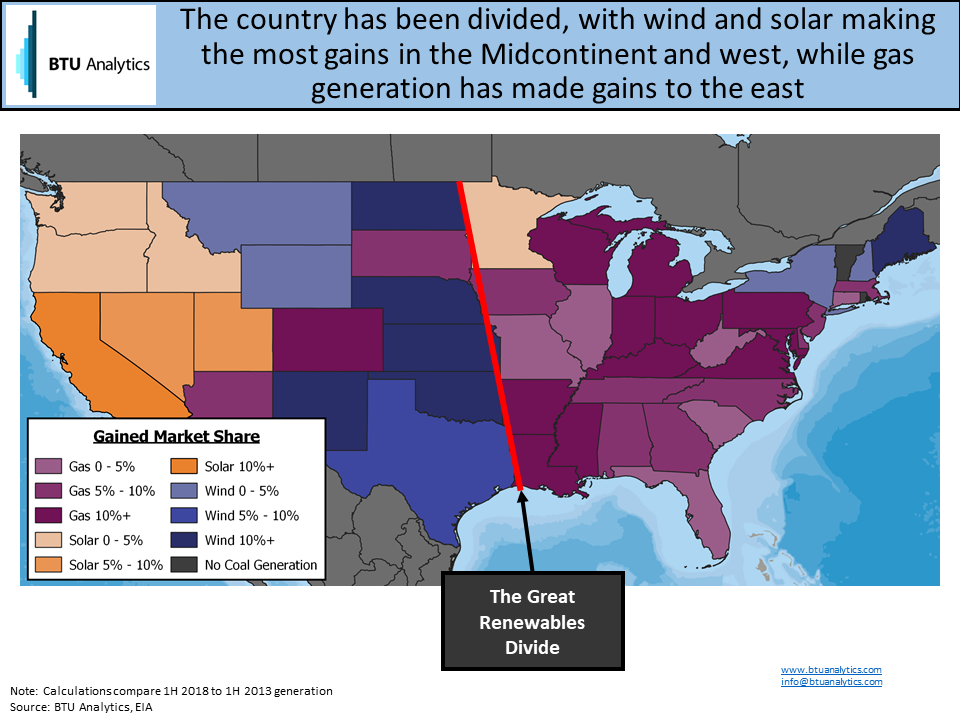Coal-fired power generation is on the decline. Hard to argue with that. The EIA recently published an article pointing out that coal generation is still the most predominant form of generation in 18 states. While this is true, coal’s market share in the supply stack has fallen in every state in the Lower 48 over the past 5 years. Even coal strongholds in Appalachia have fallen victim to competing fuels and renewables, like Kentucky where coal has dropped 19% of its market share over the past five years.

With widespread coal declines, the next question to ask is: what competing fuels have captured that lost market share? To answer that question, we’ll look at generation data across each state over the last five years. The next map breaks out which fuel has gained the most in each state over the same time period. For the sake of simplicity, the map shows the fuel type that gained the most state-by-state; however, that does not mean to say that other competing fuels have not gained market share there as well. The map shows a divide has developed between the West, where wind and solar have been the predominant gainers of market share, and the East, where natural gas generation has become more ubiquitous.

The Great Renewables Divide shown above separates the fertile wind country in the Midcontinent and the sunny skies in California and the Southwest from the eastern portion of the US that is not as favorable towards renewables generation. The graphic below further breaks down the divide, showing the developing renewables deviation through time, both east and west of the divide.

Even though the eastern portion of the US is generally less conducive to renewables, the divide will likely start pushing its way east in the coming years. Of the more than 150 GW of announced wind and solar projects BTU is tracking in the Henry Hub Outlook, there is a preference towards the eastern portion of the US with about 60% of that capacity targeting eastern states. While coal’s decline is expected to continue, eventually gas will also feel the consequences of renewables growth. Look no further than what is going on today in California where solar generation has eaten away at natural gas’ market shares for a potential foreshadowing of the wider electric and power burn markets in the years to come.








